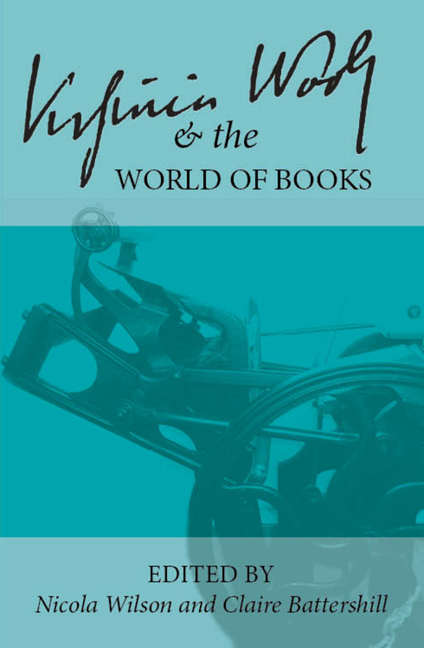 Virginia Woolf and the World of Books
Virginia Woolf and the World of Books Book contents
- Frontmatter
- Contents
- Introduction
- List of Abbreviations
- Keynote
- In the Archives
- Craftsmanship
- The Hogarth Press
- Hours in A Library
- The Art of the Book
- The Art of the Narrative
- Making New Books: Creative Approaches
- Queer Woolf: Queer Approaches and Creative-Critical Research
- Following Virginia Woolf's Call for a Press of One's Own: Making Waves Press Launches Judith's Room
- Thinking Is Our Fighting: How to Read and Write Like Woolf in the Age of Trump
- The Book in the World: Woolf's Global Reception
- Editing and Teaching Woolf
- Intertextuality
- Lives in Writing
- Notes on Contributors
Following Virginia Woolf's Call for a Press of One's Own: Making Waves Press Launches Judith's Room
from Making New Books: Creative Approaches
- Frontmatter
- Contents
- Introduction
- List of Abbreviations
- Keynote
- In the Archives
- Craftsmanship
- The Hogarth Press
- Hours in A Library
- The Art of the Book
- The Art of the Narrative
- Making New Books: Creative Approaches
- Queer Woolf: Queer Approaches and Creative-Critical Research
- Following Virginia Woolf's Call for a Press of One's Own: Making Waves Press Launches Judith's Room
- Thinking Is Our Fighting: How to Read and Write Like Woolf in the Age of Trump
- The Book in the World: Woolf's Global Reception
- Editing and Teaching Woolf
- Intertextuality
- Lives in Writing
- Notes on Contributors
Summary
Virginia Woolf's life and work demonstrate what a press of one's own provides: autonomy, subversive potential to evade censors, and the sheer delight of creation and communication. Such a press brings the camaraderie that comes from sharing one's words with like-minded peers—and publishing theirs. If we imagine it tweaked a bit with technological updates, a passage in Three Guineas rings true today:
Still, Madam, the private printing press is an actual fact, and not beyond the reach of a moderate income. Typewriters and duplicators are actual facts and even cheaper. By using these cheap and so far unforbidden instruments you can at once rid yourself of the pressure of boards, policies and editors. They will speak your own mind, in your own words, at your own time, at your own length, at your own bidding. And that, we are agreed, is our definition of “intellectual liberty.”…Fling leaflets down basements; expose them on stalls; trundle them along streets on barrows to be sold for a penny or given away. Find out new ways of approaching “the public.” (TG 116–17)
Much, of course, has changed since the early twentieth century when she and Leonard launched their press. What is involved in launching a press of one's own for the 21st century? The technological choices are quite different; one can publish on-line, or design publications digitally for print publication, for example. Reviving technologies such as letterpress printing, or combining digital and retro technologies in hybrid forms can broaden the scope as well. More visual options are available for illustrations or visual annotations of a text. For all the changes, however, the essence of a press of one's own is the same: autonomy and freedom from censors.
Virginia Woolf is the muse, mentor and role model for my forays into letterpress and the book arts as I establish my own press, Making Waves Press. Making Waves Press has printed letterpress broadsides of Woolf 's phrases, a letterpress chapbook of the poems of Septimus Warren Smith, Revelations in Vision & Song (2013) and my first full-length book digitally designed for print, Judith's Room, which had its debut at the Virginia Woolf and the World of Books conference.
- Type
- Chapter
- Information
- Virginia Woolf and the World of BooksSelected Papers from the Twenty-seventh Annual International Conference on Virginia Woolf, pp. 189 - 194Publisher: Liverpool University PressPrint publication year: 2018
